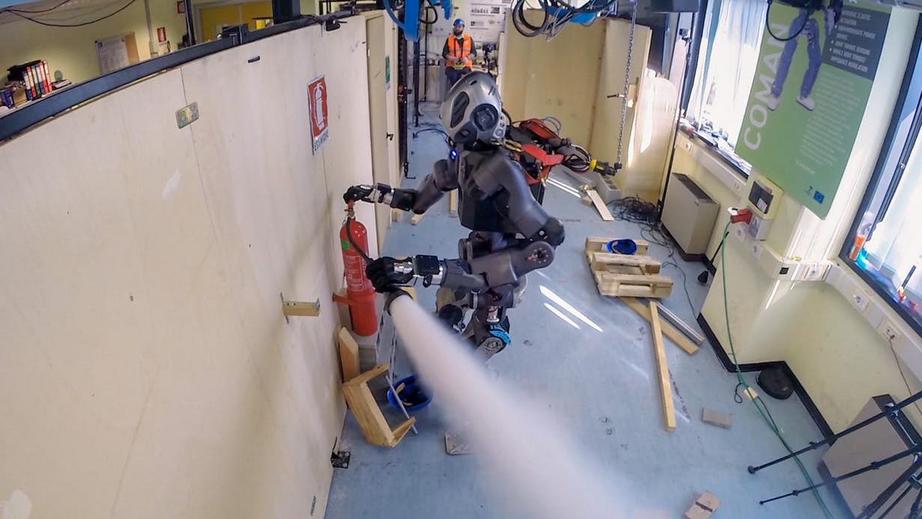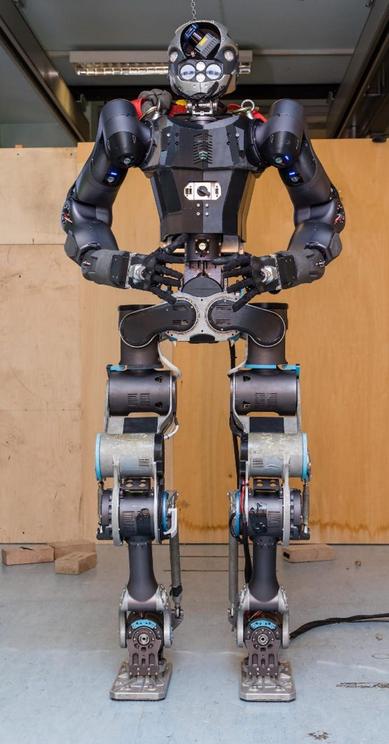New firefighting robot gets put to the test
SAFFiR, the US Navy's experimental firefighting robot, may be in for some competition. That's because researchers at Italy's IIT-Istituto Italiano di Tecnologia have successfully tested a new-and-improved version of the WALK-MAN humanoid robot, which is designed to support firefighters.

WALK-MAN was developed through a European Union-funded project that also includes the University of Pisa in Italy, the École Polytechnique Fédérale de Lausanne (EPFL) in Switzerland, the Karlsruhe Institute of Technology in Germany, and the Université Catholique de Louvain in Belgium. The project began in 2013, with the original version of the robot being completed in 2015.
Remotely controlled by a human operator wearing a sensor-equipped suit, WALK-MAN is intended to enter a building, find a fire, then put it out with an extinguisher. The robot's head incorporates a 3D laser scanner and microphones, along with video cameras that transmit live video to the operator.
Thirty-two motors and control boards are used to control its body, along with four force and torque sensors located at its hands and feet, and two accelerometers that allow it to keep its balance.

The new version of WALK-MAN stands 1.85 meters tall (6 ft), and at 102 kg (225 lb) is 31 kg (68 lb) lighter than the original. Most of those weight-savings are in its more compact upper body, made from magnesium alloys and composite materials.
Because it's lighter, it's able to move its legs faster. This allows it to respond more quickly in order to maintain its center of balance, and keep from falling over on uneven terrain. And because it's more compact, it's now easier for the robot to pass through standard doorways and narrow passages.
It can operate for about two hours on one charge of its battery pack.
Another improvement is the hands, which are now not only lighter, but have a more human-like finger-to-palm size ratio – this means it's better able to grasp objects designed for use by humans. Additionally, thanks to a new version of the lightweight actuators used in the arms, it's now able to lift 10 kg per arm (22 lb), as opposed to the previous 7 kg (15 lb).
In the recent test, the robot was successfully able to open a door to get into a room, locate and close a valve to stop a hypothetical gas leak, remove debris blocking its path, and then locate a fire and use an extinguisher.
WALK-MAN can be seen in action, in the video below.
Source: ITT via EurekAlert
Video can be accessed at source link below.

